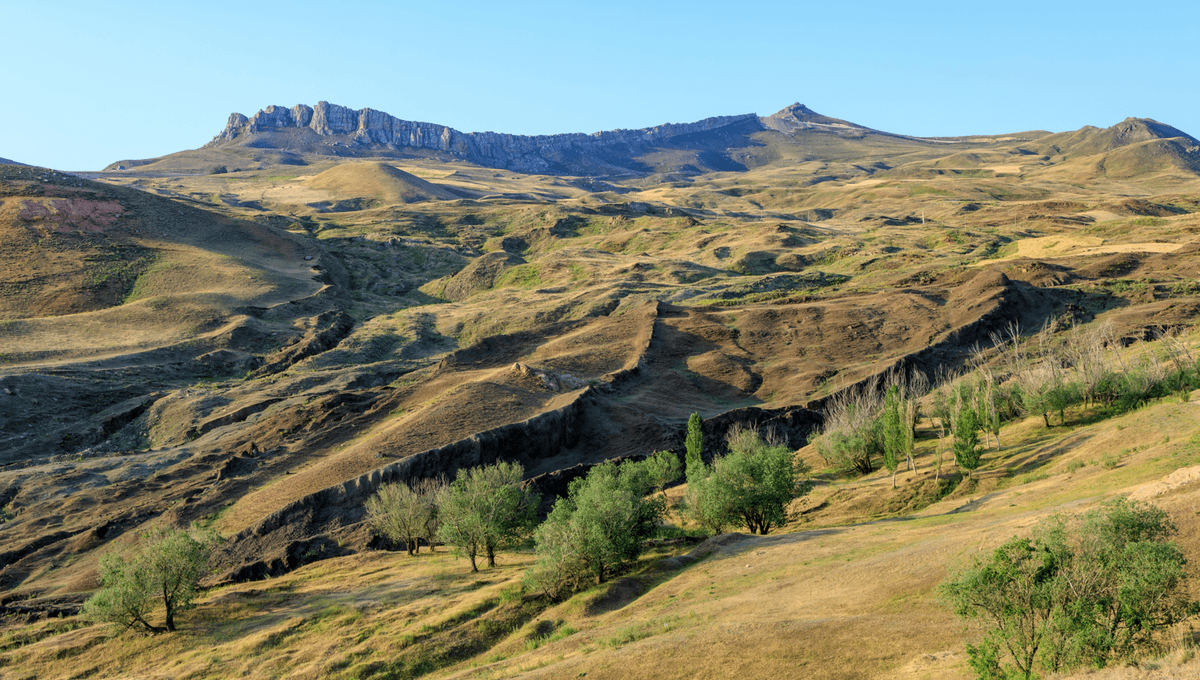
A group of independent researchers from the US is rallying around a curiously ship-shaped ridge on a Turkish mountain – and they’re pretty confident they will eventually unearth the shipwreck of Noah’s Ark. It’s a fascinating project, but these bold claims of biblical archaeology should be taken with a pinch of Dead Sea salt.
The Durupınar site is a geological formation located along the southern flank of Mount Tendürek in eastern Turkey. Stretching 164 meters (538 feet) in length, the unusual shape of the mount has led some to believe it contains the petrified ruins of the original Noah’s Ark, the giant boat in the Genesis flood myth that was said to provide shelter for every single animal species on Earth during a biblical deluge.
It was first identified in 1948, although it lay in relative obscurity until the late 1970s and ’80s when it caught the attention of Ron Wyatt, a self-styled amateur archaeologist who brazenly claimed it was the landing place of Noah’s Ark.
Wyatt wasn’t shy about promoting his far-fetched ideas. He also asserted that he had discovered several other key biblical sites and artifacts, including the remains of the cities of Sodom and Gomorrah, the location of the Red Sea crossing, and even the Ark of the Covenant beneath the Temple Mount in Jerusalem.
However, archaeologists and scholars don’t take any of this seriously. Commenting on Wyatt’s work in 1996, Joe Zias from the Israel Antiquities Authority said: “We are aware of his claims, which border on the absurd as they have no scientific basis whatsoever nor have they ever been published in a professional journal. They fall into the category of trash which one finds in tabloids such as the National Enquirer, Sun etc. It’s amazing that anyone would believe them.”
Private groups, including Wyatt and some Turkish researchers, have conducted geophysical surveys of the Durupınar site several times, first in the 1980s, and then again in 2010, 2014, and 2019. However, none of their findings have ever been made public. Meanwhile, others’ claims about the site have typically gone nowhere, often dismissed by experts as nothing more than natural rock formations.
Nevertheless, the belief refuses to go away. One group fascinated with the Durupınar site is the California research collective known as Noah’s Ark Scan. Despite the tabloid headlines, the team has no immediate plans to excavate. In the meantime, their priority is preserving the site and allowing Turkish scientists to carry out further non-invasive work.
“Excavations at the ‘boat site’ haven’t started yet because we first need more geophysical surveys, core drilling, and careful planning. The location lies in an active earth flow with harsh winters, so protecting the area is our top priority,” Noah’s Ark Scan said in a recent statement.
“Over the next few years, our Turkish university partners will conduct non-destructive tests—like soil sampling, radar scans, and other methods—to determine if the structures we’ve detected are truly man-made or simply natural formations. Only after we gather enough evidence and have a proper preservation plan in place will we consider excavating,” they added.
The evidence so far suggests that the Durupınar site is nothing more than an interesting natural geological formation. David Fasold, a researcher who joined Wyatt on the early expeditions in eastern Turkey, was initially convinced the mound did represent a hidden shipwreck, but he eventually grew sceptical.
In 1996, he co-authored a peer-reviewed paper called “Bogus ‘Noah’s Ark’ from Turkey Exposed as a Common Geologic Structure” – whose title speaks for itself.
There is no scientific evidence that a global flood swept the Earth in ancient times, let alone that a man named Noah built a massive ship to save all life from the deluge. Even so, it is striking how many cultures have myths about a great flood, from the Mesopotamian Epic of Gilgamesh and the biblical account of Noah to similar legends among the ancient Greeks, Hindus, and Indigenous peoples of the Americas.
This widespread theme raises compelling questions. Are these stories echoes of real, localized natural disasters passed down through generations? Or do they reflect something more symbolic, a deeper cultural narrative about destruction, survival against the odds, and the human struggle to find order in a chaotic world?
Source Link: Noah's Ark Or Just A Big Mound? US Researchers Eye Up A Strange Ship-Shaped Ridge In Turkey